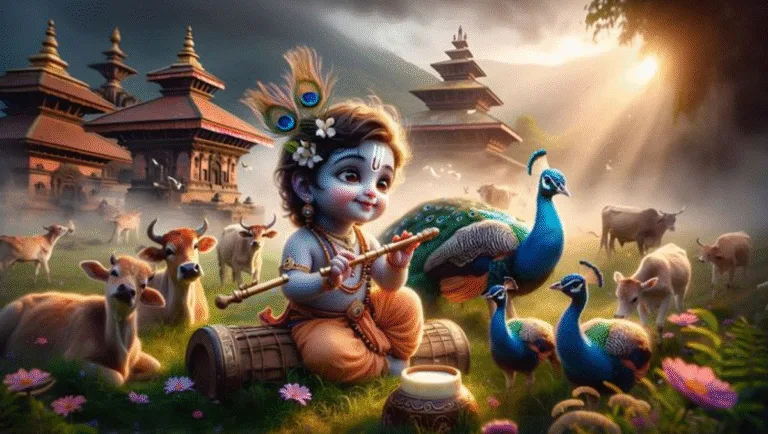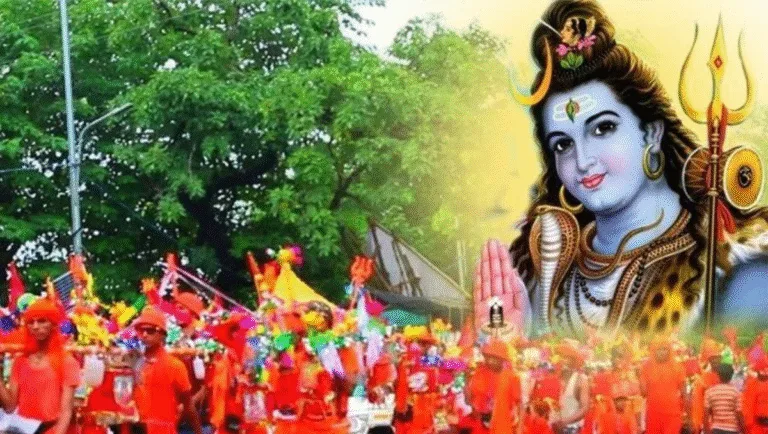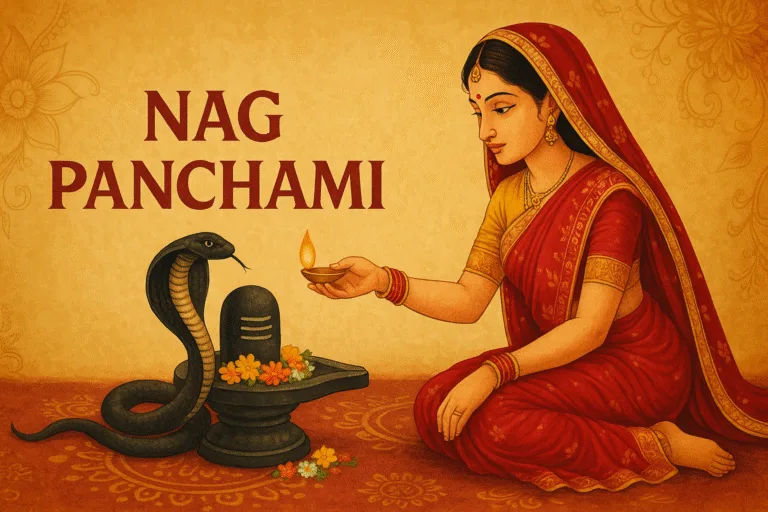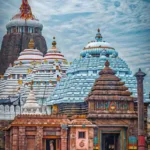In the grand celestial theatre, few events are as spiritually resonant as the full moon. It is a symbol of completion, illumination, and clarity. Once a year, during the Hindu month of Ashadha, this full moon takes on a profound significance, marking the festival of Guru Purnima. It is a day steeped in millennia of tradition, a timeless celebration of the sacred bond between the teacher and the student, the guide and the guided.
As we look towards 2025, Guru Purnima offers a precious opportunity to step back from the relentless pace of modern life and pay homage to the sources of wisdom that shape our existence. It is a day not just for spiritual seekers, but for every individual who has ever been touched by the light of knowledge.
- Mark Your Calendars: Guru Purnima 2025
- The Etymology of Enlightenment: What “Guru” Truly Means
- Vyasa Purnima: The Day of the Primordial Guru
- A Festival Beyond Boundaries: Echoes in Buddhism and Jainism
- The Deeper Symbolism: The Full Moon and the Prepared Mind
- Celebrating Guru Purnima 2025: Traditional and Modern Observances
- The Message for 2025: Finding Guidance in a World of Information
- FAQs
Mark Your Calendars: Guru Purnima 2025
In 2025, the luminous full moon of Guru Purnima will grace the skies on:
- Date:July 10, 2025
- Tithi (Lunar Day): Ashadha Purnima
The Purnima tithi is set to begin in the early hours of July 13 and conclude in the early morning of July 14, making Sunday the principal day for all observances, prayers, and celebrations across the globe.
The Etymology of Enlightenment: What “Guru” Truly Means
To understand the festival, we must first understand its heart: the word “Guru.” This Sanskrit term is a profound concept encapsulated in two syllables:
- ‘Gu’ (गु) translates to darkness, ignorance, or the shadows of illusion.
- ‘Ru’ (रु) translates to the remover, the dispeller, or that which eradicates.
Thus, a Guru is quite literally the “remover of darkness.” They are not merely an instructor of facts but an illuminator of truth, one who guides a disciple from the darkness of existential ignorance to the radiant light of self-realization and ultimate knowledge. This concept elevates the act of teaching from a mere profession to a sacred calling.
Vyasa Purnima: The Day of the Primordial Guru
The historical and spiritual bedrock of Guru Purnima is its identity as Vyasa Purnima. The day commemorates the birth anniversary of the legendary sage, Maharishi Veda Vyasa, who is revered as the Adi Guru (the original Guru) in the Hindu tradition. His intellectual and spiritual contributions are so vast that they form the very foundation of Hindu philosophy and scripture.
To call Vyasa a literary giant would be an understatement. He was a cosmic librarian, an organizer of divine knowledge. His monumental works include:
- The Codification of the Vedas: Before Vyasa, the Veda was considered a single, boundless body of divine knowledge. Recognizing that it was too immense for ordinary humans of the Kali Yuga (the current epoch) to grasp, he meticulously organized this knowledge into four distinct parts: the Rigveda (hymns of praise), the Yajurveda (sacrificial formulas), the Samaveda (melodies and chants), and the Atharvaveda (spells, incantations, and worldly knowledge). This act made the eternal wisdom of the Vedas accessible to humanity for ages to come.
- The Authoring of the Mahabharata: Veda Vyasa composed the epic Mahabharata, one of the longest poems ever written. It is an intricate tapestry of war, politics, love, betrayal, and dharma. Within this epic, he embedded its most precious jewel: the Bhagavad Gita. The Gita, a 700-verse dialogue between Lord Krishna and the warrior Arjuna, is a masterclass in philosophy, duty, and the path to liberation, serving as a spiritual guide for millions.
- The Composition of the Puranas: He is also credited with writing the eighteen major Puranas, which are extensive texts containing narratives about the creation and destruction of the universe, the genealogies of gods and sages, and detailed explanations of philosophical concepts through allegorical stories.
By celebrating Vyasa Purnima, we are not just honoring one sage; we are paying tribute to the entire Guru-Shishya Parampara—the unbroken lineage of teachers and disciples that has preserved and transmitted this sacred knowledge through millennia.
A Festival Beyond Boundaries: Echoes in Buddhism and Jainism
While its roots are deeply embedded in Hinduism, the significance of the Ashadha Purnima transcends a single faith, finding profound resonance in other major Dharmic traditions.
- In Buddhism: For Buddhists worldwide, this day is celebrated as Dharma Day or Asalha Puja. It commemorates the moment the Buddha delivered his first sermon after attaining enlightenment. At the deer park in Sarnath, near Varanasi, he set in motion the “Wheel of Dharma” (Dhammacakkappavattana Sutta) by teaching the Four Noble Truths to his first five disciples. This sermon marked the formation of the Buddhist Sangha, or monastic community. It was on this full moon day that the light of the Buddha’s teachings first illuminated the world.
- In Jainism: This day also holds special importance in Jainism. It marks the beginning of Chaturmas, the four-month monsoon retreat for ascetics. Tradition holds that on this day, Lord Mahavira, after attaining omniscience, made his first disciple, Gautam Swami, thus establishing him as the first Ganadhara (chief disciple). Therefore, the day signifies the start of the Guru’s divine transmission of knowledge within the Jain tradition.
This pan-Indian significance highlights a universal truth: the human quest for knowledge and the reverence for those who provide it is a shared spiritual heritage.
The Deeper Symbolism: The Full Moon and the Prepared Mind
The choice of the full moon for this festival is deeply symbolic. The moon, in many spiritual traditions, represents the mind. A new moon (Amavasya) symbolizes a mind shrouded in darkness. The full moon (Purnima), in contrast, represents a mind that is fully illuminated, receptive, and calm.
The light of the moon is not harsh like the sun; it is cool, gentle, and reflective. This mirrors the nature of a true Guru’s wisdom—it doesn’t scorch the ego but gently illuminates the path, allowing the disciple to see the truth for themselves. Guru Purnima signifies the day when the disciple’s mind is prepared and receptive enough (like a full moon) to fully reflect the light of the Guru’s wisdom.
Celebrating Guru Purnima 2025: Traditional and Modern Observances
The ways to celebrate Guru Purnima are as diverse as the gurus we honour. They range from ancient, elaborate rituals to simple, heartfelt gestures of gratitude.
Traditional Spiritual Observances:
- Visiting Ashrams and Gurus: Disciples travel to be in the physical presence of their spiritual master. Ashrams and monasteries hold special events, including satsangs (spiritual discourses), meditation sessions, and kirtans (devotional singing).
- Pada Puja (Worship of the Feet): A central ritual involves the symbolic washing of the Guru’s feet. This act of humility signifies the disciple’s surrender of their ego and their readiness to receive knowledge. Disciples offer flowers, fruits, and a guru dakshina (an offering of gratitude).
- Chanting the Guru Stotram: The air in homes and temples resonates with the powerful vibrations of mantras dedicated to the Guru. The most famous is:Guru Brahma, Guru Vishnu, Guru Devo Maheshwara,
Guru Sakshat, Para Brahma, Tasmai Shri Gurave Namaha.
(Translation: The Guru is the Creator (Brahma), the Preserver (Vishnu), and the Destroyer (Shiva). The Guru is the absolute, supreme Reality itself. Salutations to that revered Guru.) - Spiritual Practices: Many devotees observe a fast, engage in extended periods of meditation, and study sacred texts, recommitting themselves to the teachings they have received.
Contemporary and Personal Ways to Celebrate:
The spirit of Guru Purnima can be beautifully integrated into our modern lives, extending beyond a spiritual context.
- Honour Your Academic Teachers: Think back to a teacher who made a real difference in your life. Write them an email, send them a message, or, if possible, give them a call. Let them know the impact they had.
- Acknowledge Your Mentors: In your professional life, there are people who guide your career and champion your growth. Use this day to express your sincere appreciation for their guidance.
- Express Gratitude to Parents: Our parents are our first and most fundamental gurus. Spend quality time with them, cook them a meal, or simply tell them how grateful you are for the life lessons they have taught you.
- The Guru Within: Take time for self-reflection. Journal about the greatest lessons you have learned over the past year. Acknowledge your own intuition and inner wisdom—the Sadguru or true teacher that resides within you.
- Become a Guru: The best way to honour a teacher is to embody their teachings. Share your knowledge and skills with someone else. Mentor a junior colleague, teach a child something new, or simply offer wise and compassionate advice to a friend in need.
The Message for 2025: Finding Guidance in a World of Information
In the 21st century, we are drowning in information but starving for wisdom. We have access to endless data through the internet, but true, transformative knowledge remains as elusive as ever. This is what makes the principle of the Guru so eternally relevant.
Guru Purnima 2025 is a powerful reminder that a search engine cannot replace a sage. An algorithm cannot offer personalized spiritual guidance. True growth requires a human connection—a relationship built on trust, respect, and a genuine desire to learn.
On July 10, 2025, as the full moon shines brightly, let us take a moment to honour the guiding lights in our lives. Let us bow in gratitude to Veda Vyasa, to the Buddha, to the great saints and sages, to our teachers, our mentors, our parents, and to the silent wisdom that whispers within our own hearts. May this Guru Purnima illuminate our minds and set us firmly on the path of truth and understanding.
READ IT IN HINDI – GURU PURNIMA 2025
FAQs
What is the exact date and time for Guru Purnima 2025?
Guru Purnima 2025 falls on July 10, 2025. The Ashadha Purnima tithi (the lunar phase of the full moon) will be active throughout this day, making it the primary day for all celebrations.
Is Guru Purnima only a Hindu festival?
While it has strong roots in Hinduism as Vyasa Purnima, its significance is recognized across different Dharmic traditions. Buddhists celebrate it as the day of the Buddha’s first sermon, and Jains observe it as the day their first chief disciple was initiated. Its core principle—honouring one’s teachers—is universal.
Do I need to have a spiritual Guru to celebrate Guru Purnima?
Not at all. The concept of a “guru” is vast. You can celebrate by honouring anyone who has taught you valuable lessons: your parents, school teachers, university professors, a professional mentor, an author whose book changed your life, or even a friend who gave you timely advice.
What is the difference between a “teacher” and a “Guru”?
A teacher imparts information and skills (knowledge of the external world). A Guru imparts wisdom and transformation (knowledge of the inner self). While every Guru is a teacher, not every teacher is a Guru. The Guru’s role is to help a disciple achieve self-realization and liberation from ignorance.
What is a simple way to observe Guru Purnima at home?
You can light a lamp or a candle, sit in a quiet space, and meditate for a few minutes. Mentally list the people you consider your gurus and send them feelings of gratitude. You can also read a chapter from a spiritual book that inspires you or simply call a former teacher to thank them.
Why is it celebrated on a full moon day?
The full moon symbolizes a mind that is fully illuminated, complete, and receptive to the highest wisdom, free from the dark patches of ignorance and doubt. It is the perfect celestial backdrop for a festival celebrating the dispelling of darkness.
Is Guru Purnima a public holiday in India?
No, Guru Purnima is not a national public holiday in India. However, it is observed as a holiday in many schools, especially in states like Maharashtra, and is a major festival in ashrams and spiritual institutions across the country, which may be closed for regular activities to focus on celebrations.
What is Guru Dakshina?
Guru Dakshina is a traditional offering made to the guru as a token of gratitude and respect. It is not a “payment” for teaching. Historically, it could be anything the disciple could offer, from a simple fruit to the fulfillment of a complex task. The true dakshina is the disciple’s commitment to living the teachings of the Guru.






